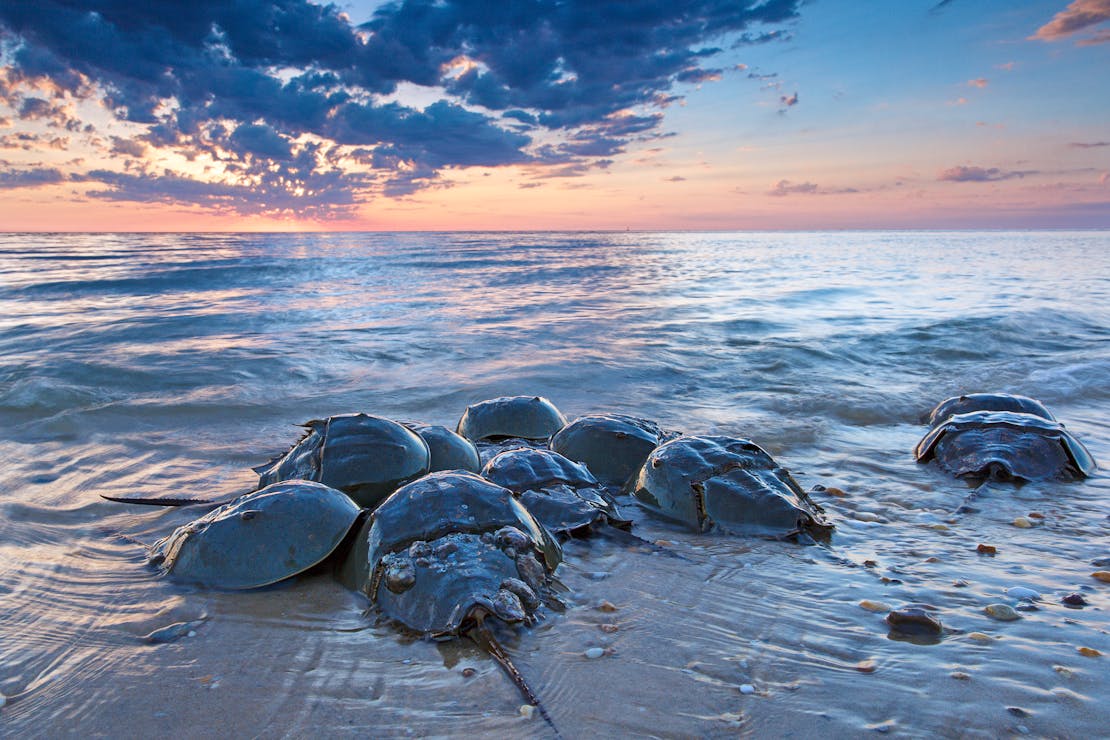TweetManagement decisions for public resources such as horseshoe crabs must be based on verifiable science, not inaccurate assumptions only loosely tethered to reality.
A new technical analysis from University of Nevada, Reno Associate Professor Dr. Kevin Shoemaker finds that a computer model used by the Atlantic States Marine Fisheries Commission does not accurately represent the impacts of a horseshoe crab bait harvest in Delaware Bay. As a result of the model’s intrinsic flaws, relying on it to justify management decisions would further imperil the rufa red knot, a shorebird listed as threatened under the Endangered Species Act. Citing this analysis, Earthjustice today sent comments to the ASMFC on behalf of New Jersey Audubon and Defenders of Wildlife, urging it to exercise precaution when setting bait harvest quotas and to maintain the prohibition on harvesting female horseshoe crabs from Delaware Bay. At its annual meeting in October, the ASMFC will set the Delaware Bay horseshoe crab bait harvest quota for 2024.
“This new analysis makes it abundantly clear that red knots remain at risk in Delaware Bay,” said Ben Levitan, senior attorney for Earthjustice’s Biodiversity Defense Program. “While the ASMFC did not authorize a female crab harvest for 2023 in response to overwhelming public concern, it also approved a fatally flawed computer model that is nearly certain to recommend a substantial female harvest in future years, which could have devastating impacts. Implementing the model’s recommendations would pose a profound risk of violating the Endangered Species Act.”
The full adaptive resource management model was withheld from the public until the evening before the ASMFC’s horseshoe crab management board approved it in November 2022. Dr. Shoemaker has since reviewed the full model, finding irremediable flaws intrinsic to its core structure and functionality. Among other deficiencies, the model fails to acknowledge the correlation between the abundance of horseshoe crabs and red knots. Despite the historical role horseshoe crab overharvest has played in the decline of red knots, the model predicts red knot abundance would increase even if all horseshoe crabs vanished from Delaware Bay. The model does not account for the number of horseshoe crab eggs on the beach—a critical food source metric that is necessary for red knot survival.
“Dr. Shoemaker’s review and reanalysis of the ASMFC’s adaptive resource management framework makes it clear that the models used by this agency to manage horseshoe crabs must be revamped,” said Dr. David Mizrahi, vice president for research and monitoring at New Jersey Audubon. “The ASMFC’s stated responsibility is to manage horseshoe crabs populations to ensure the long-term viability of red knot populations. The premise put forward by the ARM model outputs suggesting that the relationship between horseshoe crab and red knot populations are weak is an outcome of using the wrong metric to measure the relationship. Clearly, horseshoe crab eggs, which have been ignored by the ASMFC since the inception of the ARM framework, have the greatest influence on the trajectory of red knot populations.”
The ASMFC has prohibited the bait harvest of female horseshoe crabs in Delaware Bay for more than a decade, but the status of both horseshoe crabs and red knots remains precarious. Instead of delivering much-needed additional protections, the ARM model’s recommended harvest quotas would increase pressure on these species.
“Management decisions for public resources such as horseshoe crabs must be based on verifiable science, not inaccurate assumptions only loosely tethered to reality,” said Jane Davenport, senior attorney at Defenders of Wildlife. “The ASMFC is charged with conserving Atlantic coastal fishery resources based on the best scientific information available. The ARM model, however, is too fundamentally flawed to conserve depleted horseshoe crabs and protect threatened red knots that depend on horseshoe crab eggs to survive their epic migration and successfully reproduce.”
Conservation groups have repeatedly sounded the alarm over the potential of an Endangered Species Act violation on impacts to red knots if the ASMFC moves forward with a female horseshoe crab bait harvest. Red knots make one of the most epic migrations in the animal kingdom, which begins as far south as Tierra del Fuego and journeys more than 9,000 miles to their breeding grounds in the Arctic Circle. For most red knots, Delaware Bay is a critical resting point to replenish and renourish with horseshoe crab eggs that enable a rapid doubling of their body mass before they complete their journeys.
For over 75 years, Defenders of Wildlife has remained dedicated to protecting all native animals and plants in their natural communities. With a nationwide network of nearly 2.1 million members and supporters, Defenders of Wildlife is a leading advocate for innovative solutions to safeguard our wildlife for generations to come. To learn more, please visit https://defenders.org/newsroom or follow us on X @Defenders.
Media Contact
News

Defenders Celebrates Tremendous Step to Restored Florida Rivers







